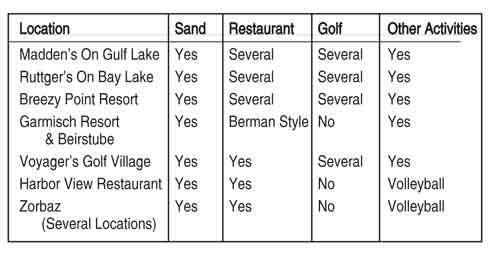by Randy Schoephoerster
Published in Midwest Flyer – April/May 2017
There are four primary reasons why pilots get a Seaplane Rating: 1) Counts as a biennial flight review. 2) Opens up unique travel destinations not possible by any other mode of transportation. 3) Develops skills in short field takeoffs and landings, and in ground handling, docking and wind management. 4) Creates a sense of belonging and achievement within the tightly knit seaplane community.
Seaplane flying is fun! If you already have your Private or Commercial Pilot Certificate, there isn’t a requirement for an FAA written exam. Although everyone has different skills, many people obtain the Seaplane “Add-On” Rating with just 6 to 10 hours of flying, making it one of the least expensive ratings a pilot can obtain.
The Seaplane Rating also develops skills not found in other ratings. The most obvious is the understanding of wind and the effects of wind on a seaplane while taxiing and docking or beaching. A seaplane tends to turn into the wind, which is called weather-vaning. Seaplane pilots limit their windy day flying activities based in part on their taxiing and docking abilities, and the seaplane they are flying, as well as the size of the waves.
Much of the seaplane pilot’s flying is done when close to maximum gross weight and on days when it is warm. The seaplane pilot’s soft field landing and short field takeoff skills need to be top notch when encountering those flight conditions.
What about rental after you’ve gotten your rating? There are several commercial operators in Minnesota that offer solo seaplane rental, but they are few and far between as the insurance rates are high for seaplane operators. Other seaplane rental options are seaplane flying clubs, or an individual seaplane owner who is willing to share expenses.
Once a pilot has the rating, and a seaplane to fly, he/she can turn his/her attention to where to fly.
Both the Minnesota DOT Office of Aeronautics and the Wisconsin DOT Bureau of Aeronautics provide excellent information on seaplane bases, and waterways open to seaplanes, on their websites. The national Seaplane Pilots Association (SPA) has an excellent source of waterway information, if you are a member, called “The Water Landing Directory.”
A resort or restaurant that has a nice sand beach with protection from the wind is one of my favorite Minnesota and Wisconsin places to fly to with a seaplane.
Below is a list of some of my favorite seaplane destinations:

The list is by no means an exhaustive list, and landing at a non-public seaplane base is at your own risk, but isn’t that the same as bush plane flying? It’s exciting and challenging, and can be safe if you are properly trained and qualified. Always call ahead on your first trip to get any new information that might affect your trip. Google Earth can also give a great depiction of the water access area.
The seaplane community is close knit, well educated and gives every new seaplane pilot a great source of information on seaplane flying. Just hang out at one of the public seaplane bases and the community of seaplane pilots will bring you into the fold and provide lots of information on their favorite places to fly, how to best maintain the equipment, what not to do, and what to do.
The Minnesota Seaplane Pilots Association offers great seaplane pilot gatherings: a safety seminar in May each year at Madden’s Resort in Brainerd, and a “pig roast” in late summer at Surfside Seaplane Base, Lino Lakes.
As a final destination point, don’t forget the EAA Seaplane Base on Lake Winnebago at Oshkosh, Wisconsin, during EAA AirVenture Oshkosh in July. There are as many as 50-70 seaplanes docked in the harbor most days of the fly-in with many experienced seaplane pilots with whom to mingle.
The wonderful world of seaplanes gives pilots an avenue to develop new skills only found in the art of seaplane flying, and to hone old skills and develop safety practices, while having the most fun one can have flying an airplane. With the many lakes available in Minnesota and Wisconsin, one just can’t run out of fun and safe destinations!
EDITOR’S NOTE: Randy Schoephoerster is a Field Director with the Seaplane Pilots Association and past president of the Minnesota Seaplane Pilots Association. He is also a FAASTeam Lead Safety Representative, and Vice President of the Minnesota Pilots Association. He owns Air Trek North in the Twin Cities with offices at Flying Cloud Airport in Eden Prairie, Fleming Field in South St. Paul, and Airlake Airport in Lakeville. He holds the following pilot certificates and ratings: ATP, ASEL, ASES, AMEL, MEI, CFI, and CFII. To contact Randy Schoephoerster, call 952.594.1184 or email randy@airtreknorth.com (www.airtreknorth.com).










